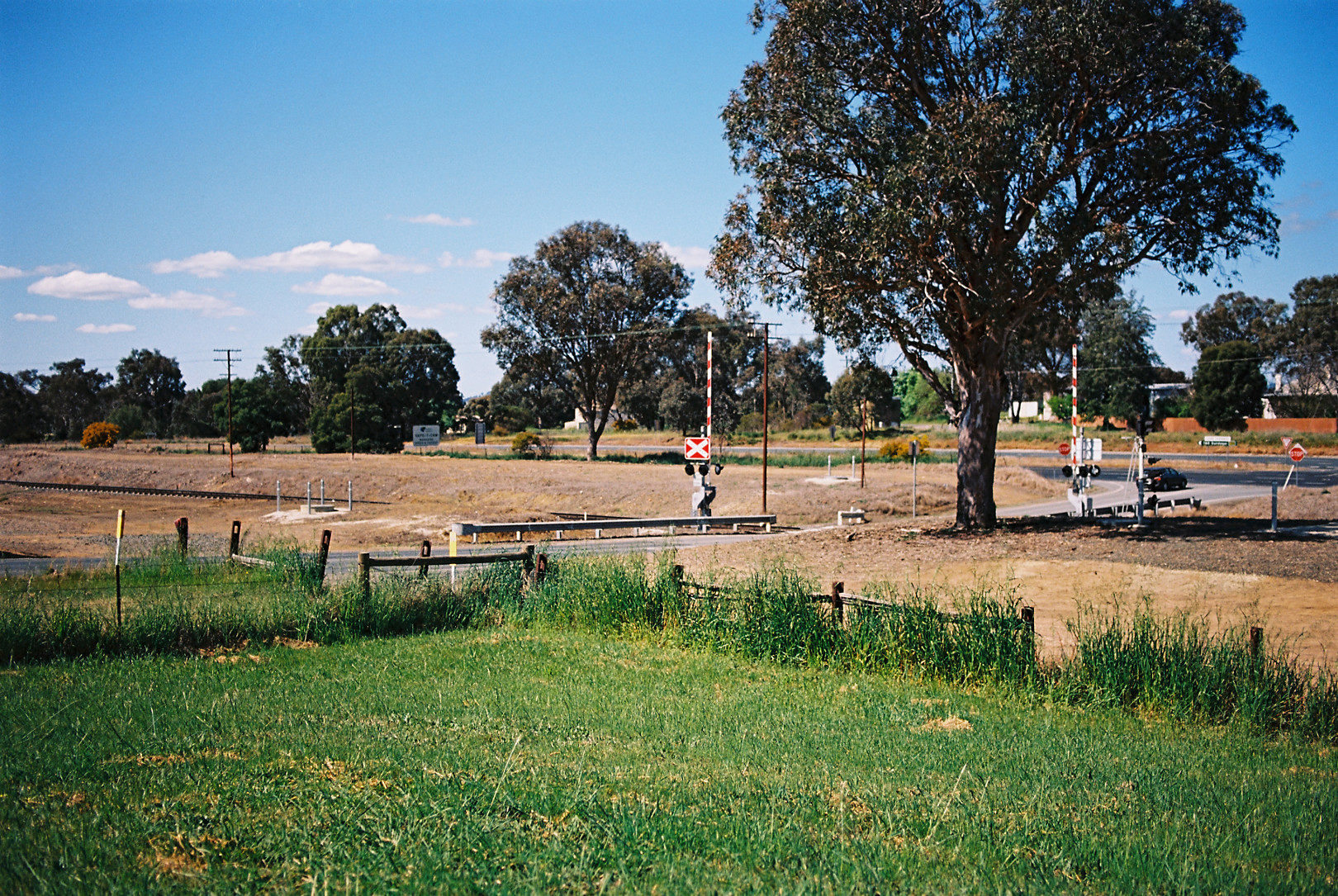 |
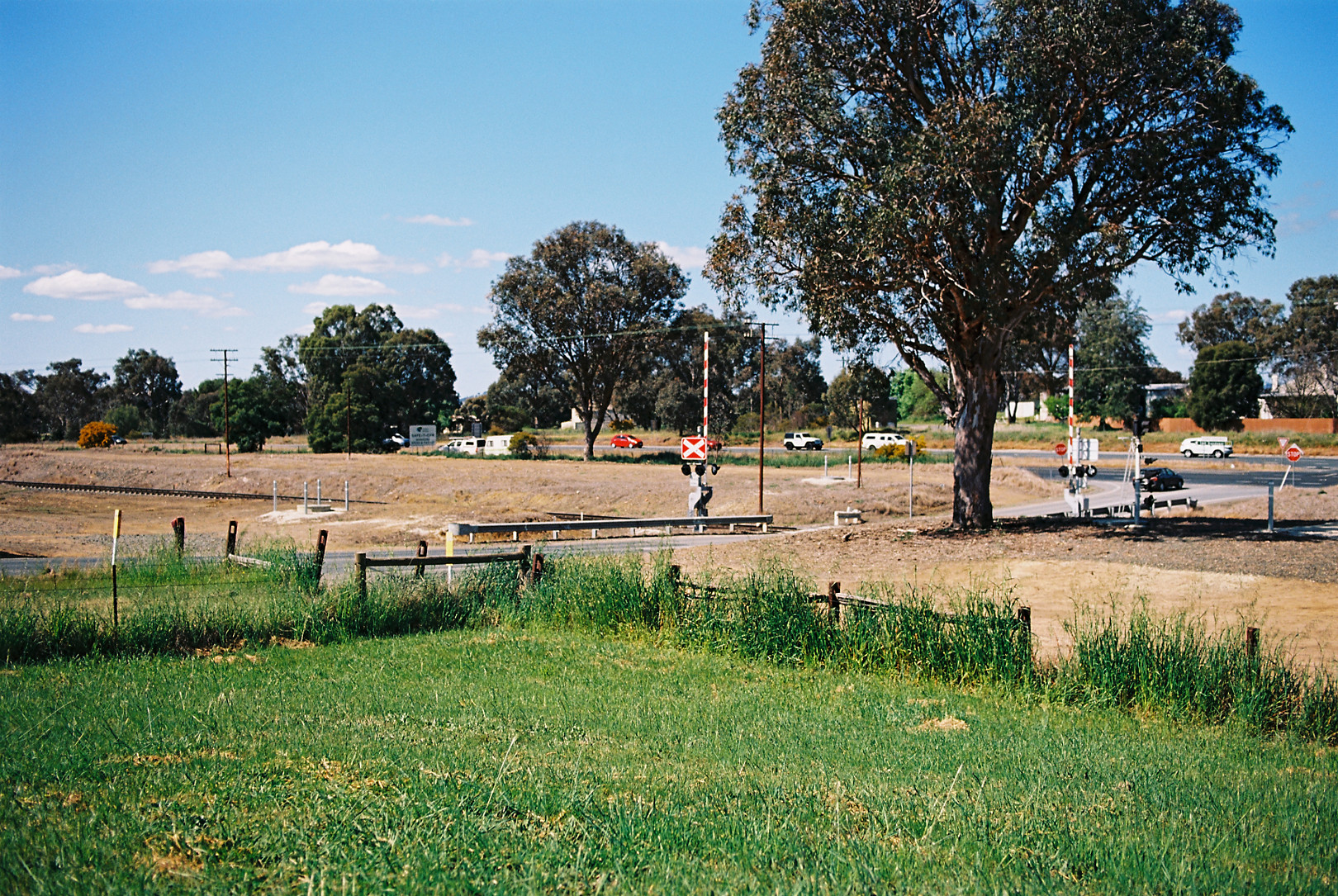 |
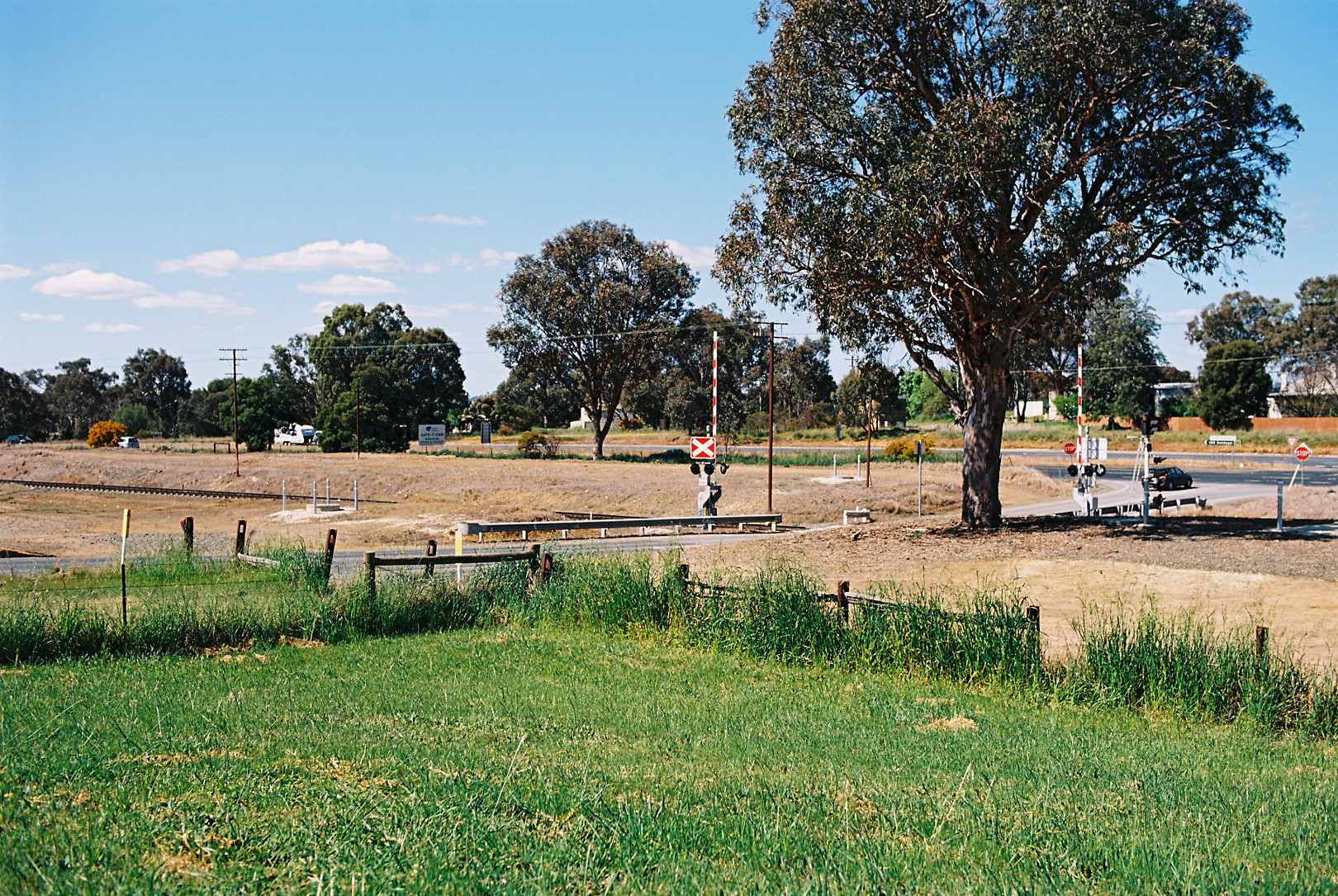 |
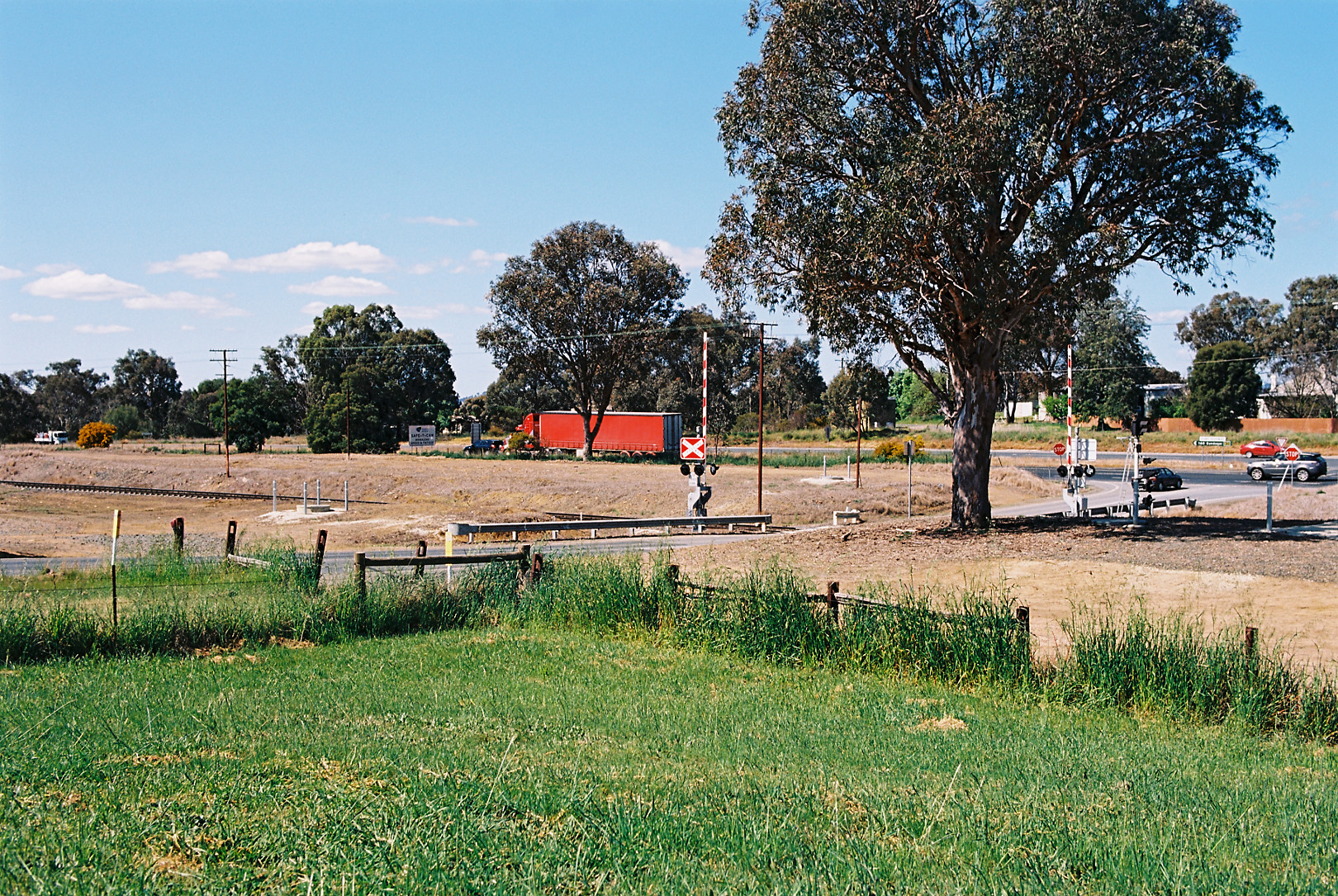 |
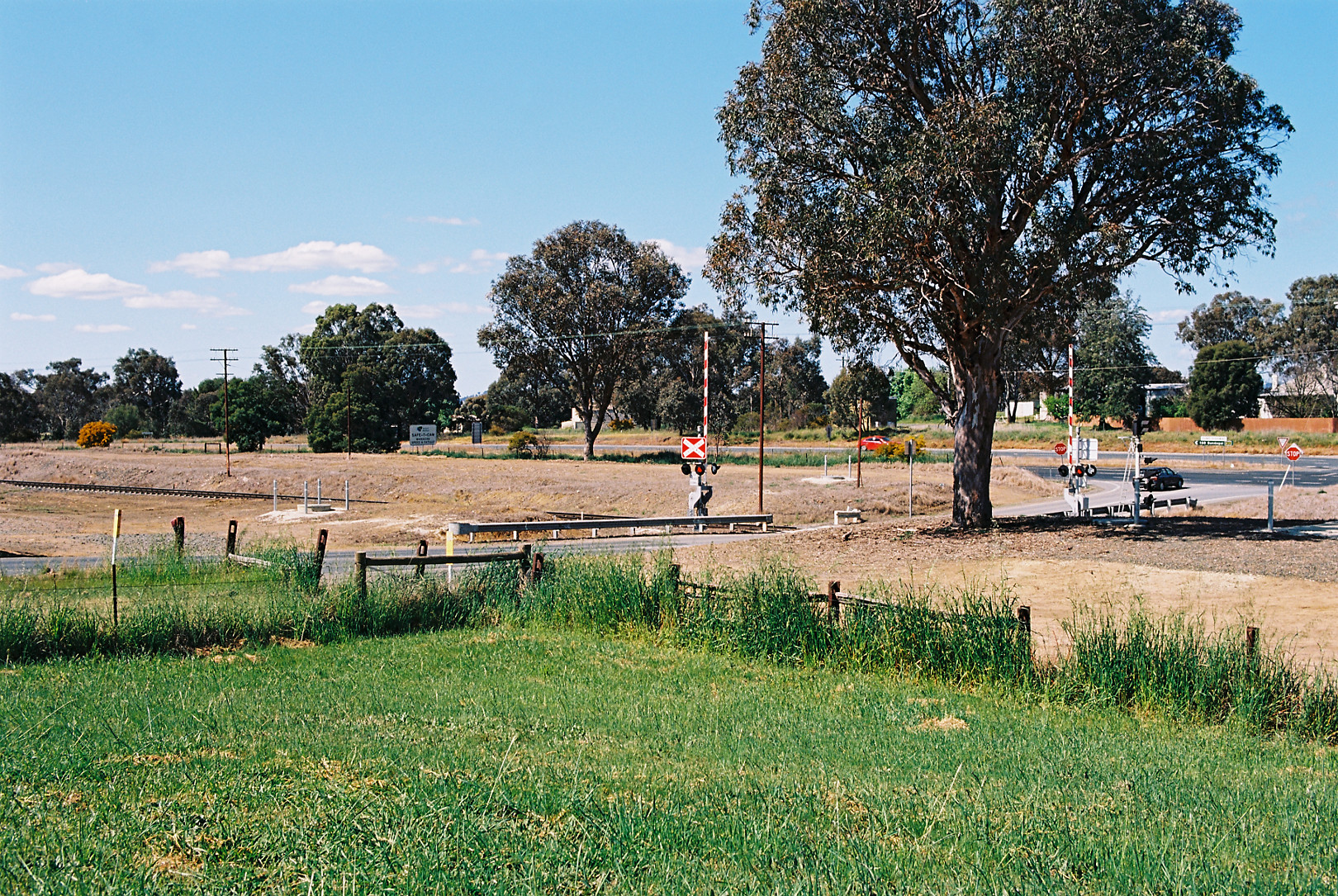 |
|
This series was focused on the railway sign, almost at the infinity mark on this lens, shooting with a tripod over my back fence. I was interested to see how successive apertures would stretch the depth of focus, reduce vignetting and increase the legibility of the sign. Apertures are from f/2 to f/8.
Ektar in a tripod-mounted F6 using the self-timer is arguably the best possible resolution in 35mm colour negative film, although recently I have changed to Portra 160 for more accurate colours. This setup is more than capable of showing the strengths or deficiencies of my lenses.
Vignetting at f/2 is heinous. Some online reviews put the corner darkening at almost two stops. At f/2.8 vignetting improves but the centre crops are still not acceptably sharp for critical work.
At f/4 there is a sudden leap of quality. The railway crossing sign is almost readable, vignetting has almost vanished and there is a useful increase in focus depth — note the Stop signs at the highway intersection. The lens continues to improve at f/5.6 which is optimum for this distance. There is much more focus depth at f/8 and the edges are very sharp.
100% crops show an impressive clarity, at least for us film shooters. 😎
I am generally more interested in seeing the entire frame. Pixel peeping as a method of evaluating the worth of an image seems to me a very odd concept, rather like judging a Rubens painting with a microscope. A close look is valuable here when simply testing hardware.